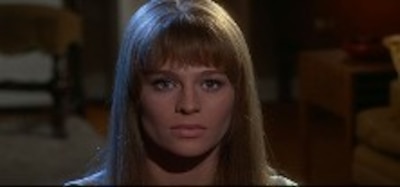Tony Walton
About
Biography
Filmography
Family & Companions
Bibliography
Notes
"As a designer, you build up a close relationship with actors when they are at their most insecure. The first sight of themselves at that first costume fitting can be very unsetlling." --Tony Walton quoted in The New York Times, October 20, 1996.
Walton has contributed illustrations to various publications including Playbill, Theatre Arts, and Vogue.
Biography
This noted British designer began his career at age 22 with the 1957 Broadway production of Noel Coward's "Conversation Piece." Walton alternated between designing for the London and New York stage throughout the late 1950s and early 60s. He entered films as costume designer and visual consultant on Disney's "Mary Poppins" (1964) which starred his then-wife Julie Andrews. His eye-popping, late Edwardian costumes for this landmark film that included a mix of animation and live-action earned him the first of five Oscar nominations. He went on to create the futuristic world of "Fahrenheit 451" (1966) and the Roaring Twenties look of Ken Russell's backstage musical version of "The Boy Friend" (1971). "The Sea Gull" (1968), with its 19th Century Russian settings, marked the first of seven screen collaborations with Sidney Lumet. Walton went on to earn Oscar nominations for his elegant costumes for the director's "Murder on the Orient Express" (1974) and for both sets and costumes for Lumet's misguided "The Wiz" (1978). Walton finally shared a statuette (with Philip Rosenberg) for Bob Fosse's superb "All That Jazz" (1979), which required the creation of not only contemporary Manhattan settings, but also elaborate fantasy and flashback sequences, most notably a hospital setting.
Walton, however, has been one of the preeminent stage designers since the 1960s. Beginning with his witty costumes and sets for "A Funny Thing Happened on the Way to the Forum" in 1963, he has created the look for many successful musical productions including the Fosse-directed "Pippin" (1972) with its Carolingian setting, and "Chicago" (1975), set in the 20s, the Tommy Tune-staged "A Day in Hollywood/A Night in the Ukraine" (1980), which recreated the Tinseltown glamour in of the 30s, and "Grand Hotel" (1989), set in pre-war Berlin, and the acclaimed revival of "Guys and Dolls" (1992). Walton has frequently worked with Mike Nichols, creating everything from the barracks of "Streamers" (1977) to the contemporary English settings of Tom Stoppard's "The Real Thing" (1984). More recently, Walton has branched out into directing, staging and designing a well-received 1996 revival of Oscar Wilde's "The Importance of Being Earnest."
Filmography
Cast (Feature Film)
Art Director (Feature Film)
Costume-Wardrobe (Feature Film)
Art Department (Feature Film)
Production Designer (Feature Film)
Misc. Crew (Feature Film)
Cast (Special)
Costume-Wardrobe (Special)
Art Department (Special)
Film Production - Main (Special)
Misc. Crew (Special)
Cast (Short)
Life Events
1955
Worked as a designer at Peter Haddon's Company in Wimbledon, England
1957
First Broadway production as designer, Noel Coward's "Conversation Piece"
1958
London stage debut as designer "Valmouth"
1959
TV debut as designer, "The Julie Andrews Show" (BBC)
1959
Debut as stage producer, the British production of "The Ginger Man"; also designed sets and costumes
1962
Designed the sets and costumes for the original stage production of "A Funny Thing Happened on the Way to the Forum"
1963
Debut as opera designer, the Sadler's Wells Opera Company production of "The Love of Three Oranges"
1964
First film as costume designer and consultant "Mary Poppins"; earned first Oscar nomination
1965
First feature credit as production designer "A Funny Thing Happened on the Way to the Forum"
1966
Received first Tony Award nomination for designs for the musical "The Apple Tree"; first stage collaboration with Mike Nichols
1968
First screen collaboration with Sidney Lumet, "The Seagull"
1972
Won first Tony for scenic design for the Bob Fosse-directed musical "Pippin"
1974
Won Oscar nomination for his costumes for Lumet's "Murder on the Orient Express"
1976
US TV debut as designer, "Free to Be . . . You and Me" (NBC)
1978
Received two Oscar nominations for his costumes and sets for Lumet's "The Wiz"
1979
Won Oscar for his production design for Fosse's "All That Jazz"
1982
Last screen collaboration with Lumet, "Deathtrap"
1983
Created the designs for Fosse's last film "Star 80"
1986
First screen collaboration with Mike Nichols, "Heartburn"
1986
Won second Tony Award for his scenic design for the revival of John Guare's "The House of Blue Leaves"
1991
Served as production designer on Nichols' "Regarding Henry"; last screen credit as of 1997
1992
Earned third Tony for designing the acclaimed revival of "Guys and Dolls"
1996
Stage directing debut, "Song at Twilight" at Bay Street Theater
1996
Directed the Off-Broadway production of Oscar Wilde's "The Importance of Being Earnest" co-starring Eric Stoltz and Nancy Marchand; also designed the sets and costumes
Videos
Movie Clip



Trailer




Family
Companions

Bibliography
Notes
"As a designer, you build up a close relationship with actors when they are at their most insecure. The first sight of themselves at that first costume fitting can be very unsetlling." --Tony Walton quoted in The New York Times, October 20, 1996.
Walton has contributed illustrations to various publications including Playbill, Theatre Arts, and Vogue.
Inducted into the Theater Hall of Fame in 1991











